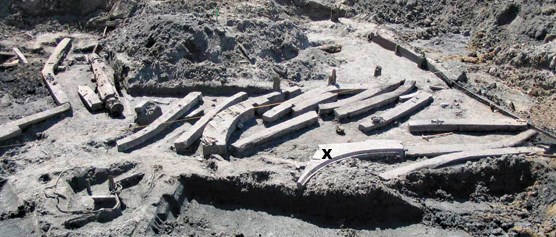
Photo by William Self Associates By Stephen Canright, Park Curator, Maritime History A particularly evocative ship timber, the stern "deadwood knee" (a central piece of the ship's stern structure) of an unidentified wooden sailing vessel, will be included in a new exhibit in the park's visitor center. An intricately shaped mass of tropical hardwood weighing 600 pounds, it retains the broad headed copper nails that once held the yellow metal sheathing that protected the underbody of the vessel. Between 1852 and 1857 Charles Hare ran a ship breaking yard there. He employed crews of Chinese immigrants to dismantle 77 old wooden vessels, salvaging their metal and selling their planking and timbers for construction material or firewood. These vessels were among the huge number that ended their days at San Francisco in the years following the Gold Rush of 1849. The most striking find on the site was the largely intact stern of a small square-rigger, later identified as the whaling bark Candace. |
Last updated: March 1, 2015
